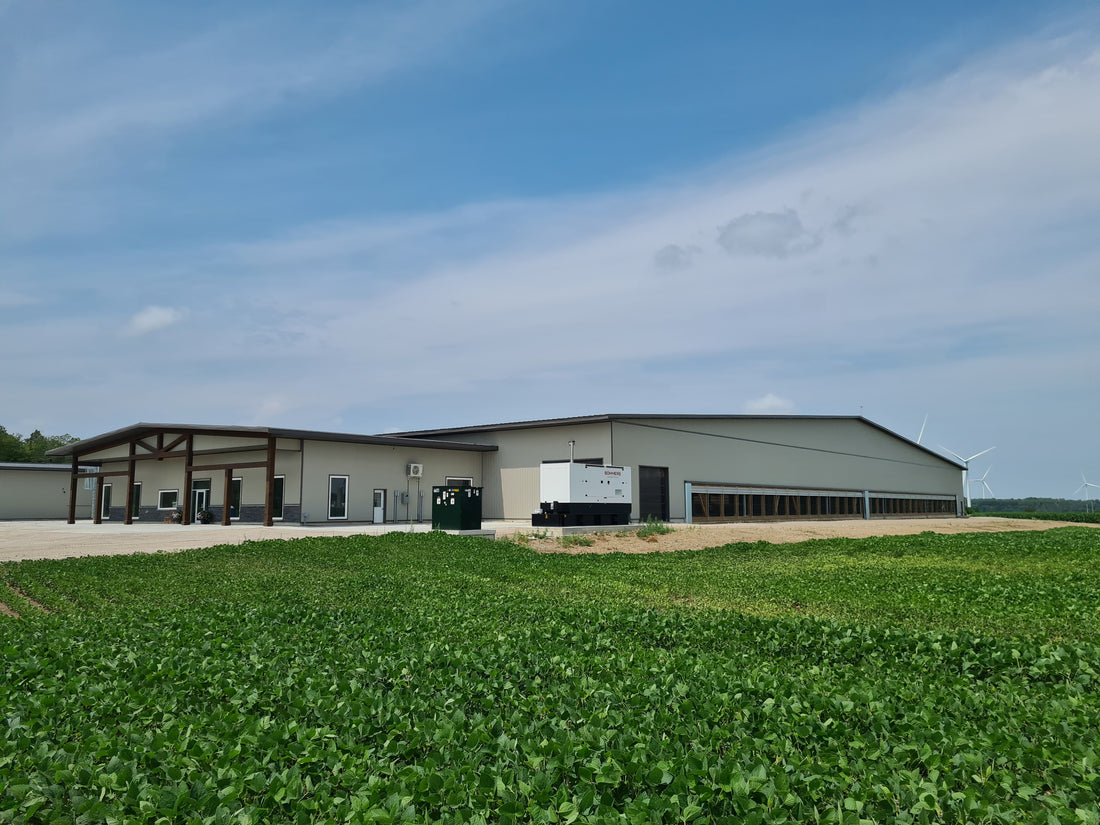I visited Ontario, Canada, at the end of July 2023. It had been more than 5 years since my last visit. Ontario, perhaps more specifically Western Ontario, is a very strong dairy producing region. Dairy farms are side by side, with an average farm size of just under 100 cows and a large proportion of farms run by Dutch immigrants.
Canadian dairy production is highly regulated, with a quota system that on the one hand prevents rapid expansion, but on the other maintains a stable and good producer price. As a result, farmers can afford to invest in new barns, and banks also finance investments with very long payment periods. The conversion of farms to robots is also not very common in Ontario, farmers prefer to build new barns for robots.
Canadian lessons in Finland since 2010
People have been looking to Ontario for lessons in the design of robotic farms and has provided them over the past 15 years. For example, the six rows of stalls in the middle, the wide feeding tables on both sides and the fetch pen are of Canadian origin. In addition, the aspect of labour efficiency was also opened up there, at least for me at that time. So many Finnish robotic barns of the 2010-2020 century contain a lot of Canadian elements.

Typical 6-row robotic barn with feeding tables on sites
I visited about a dozen new 2-11 robot barns during my summer travels. Nothing radically new in terms of functionality or basic solutions had been added in the five years since, the barns were generally 6-row with feeding tables still on the sites, functionally well designed and well-gated. All three main robot brands milked between 36 and 44 litres of milk per cow per day. Due to the Canadian quota system, the barns are also still significantly underfilled. At freestalls, the trend was clearly even more towards sand bedding.
The winds of change have been blowing in the ventilation
Due to the increasingly hot summers and an understanding of the problems caused by heat stress, many new barns have been built now by mechanical ventilation. Fans draw air through the barn, either longitudinally or crossway, via a curtain wall at the opposite end. The speed and direction of the airflow inside the building is controlled either by intermediate fans or by baffles. Depending on the direction of ventilation, this is called either cross ventilation or tunnel ventilation. There are different applications depending on the size of the barn. In particular, the larger robot sheds were short but wide, with two robot pens side by side in the barn, making the barn very wide.

A 10-robot barn with cross-ventilation, consisting of 5 adjacent groups of 2 robots
One farm had a so-called hybrid ventilation system. When the temperature is below 21°C, the air is naturally exchanged through curtain walls and open ridge. When the temperature is above 21°C, the system switches to mechanical ventilation, where the curtains are closed and the fans on top of them direct the air onto the stall rows.

Hybrid ventilation, mechanical in summer, natural in winter
So Canada, and Ontario in particular, is still an interesting place to explore, with new robotic barns being built at a steady pace.
Writer Jouni Pitkäranta

